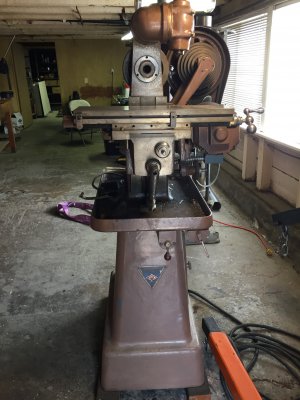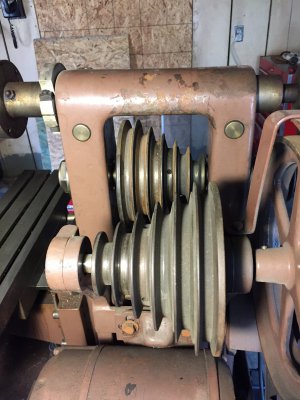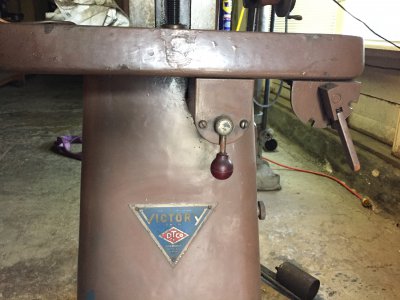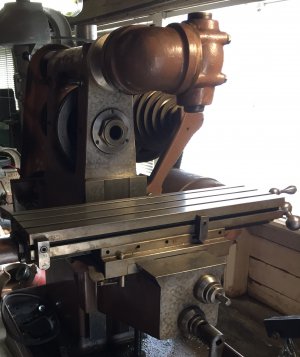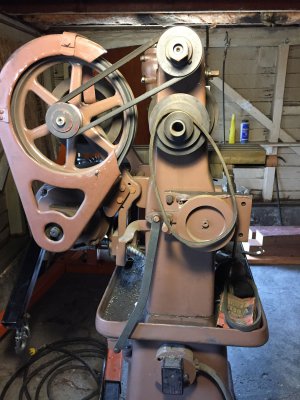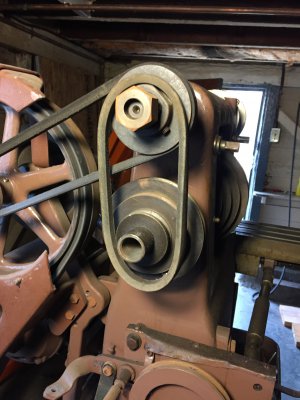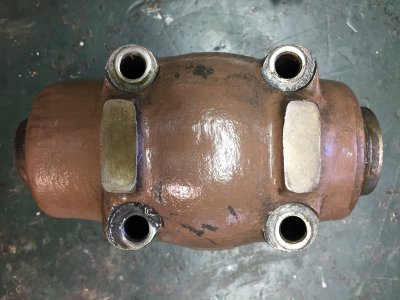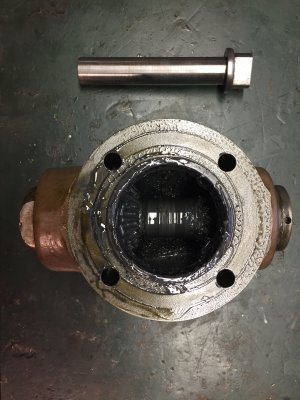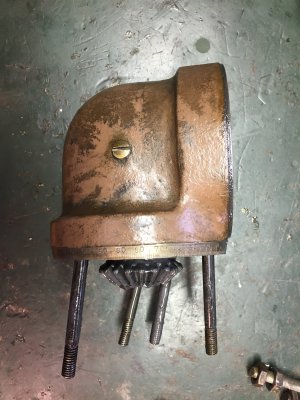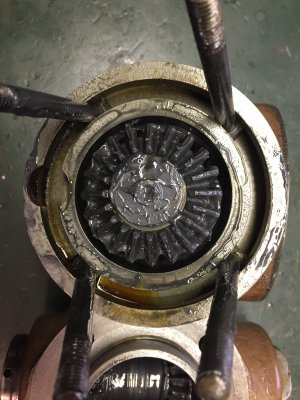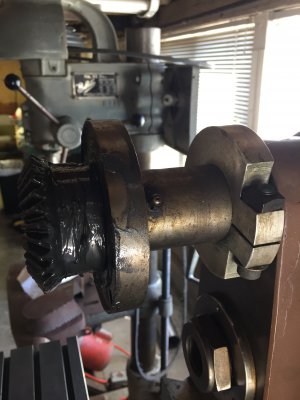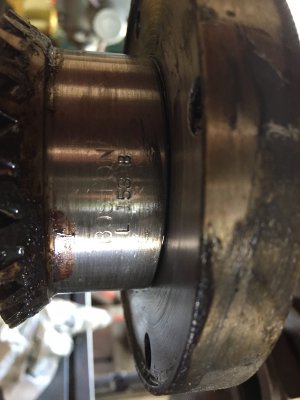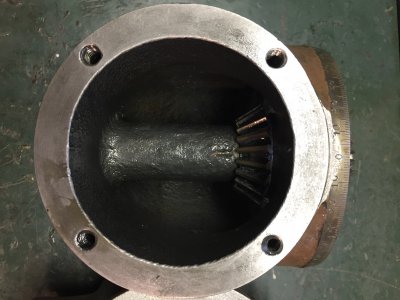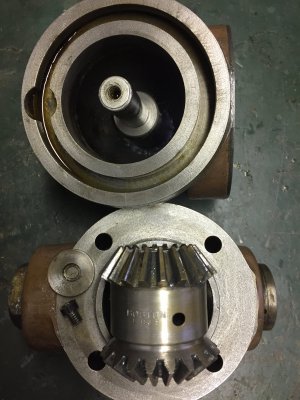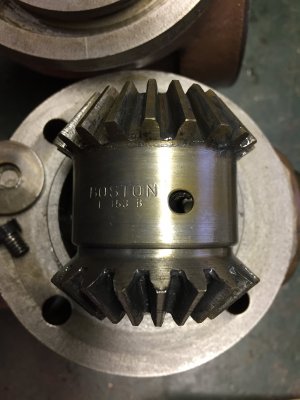Got the machine last week and the mill is somewhat mysterious as it has no model number only the Victory name. Also, the pulleys for the spindle have six different diameters versus the normally seen three different diameters driven by double belts. The power feed is set up to work in both directions by moving a lever on the front of the mill. I've been looking at advertisements and online pictures of Diamond mills and haven't noticed the power feed set up that way on any.
Was wondering if anyone knows about lubricating the vertical milling attachment it's kind of noisy. I opened it up and there's grease inside but it's not full. If I spread the grease around it runs quiet for a while but then gets noisy. There is a zerk fitting that might be routed to the head as it's near and a screw possibly to remove air. Does anyone know if the attachment is supposed to be filled all the way with grease?
Currently the vertical milling attachment is only two speeds. Eventually, I'll get a belt for the main spindle so the power feed can be connected and I'll drive the vertical head off the main spindle which would make it 12 speeds. There was a belt found inside the base storage and it seems about the size to go from the spindle to the vertical attachment as seen in the pictures. At first I was thinking that wouldn't work but then realized the pulley is adjustable. Is a direct connection from spindle to attachment the standard set up for a vertical milling attachment on these Diamond horizontal milling machines?
Was wondering if anyone knows about lubricating the vertical milling attachment it's kind of noisy. I opened it up and there's grease inside but it's not full. If I spread the grease around it runs quiet for a while but then gets noisy. There is a zerk fitting that might be routed to the head as it's near and a screw possibly to remove air. Does anyone know if the attachment is supposed to be filled all the way with grease?
Currently the vertical milling attachment is only two speeds. Eventually, I'll get a belt for the main spindle so the power feed can be connected and I'll drive the vertical head off the main spindle which would make it 12 speeds. There was a belt found inside the base storage and it seems about the size to go from the spindle to the vertical attachment as seen in the pictures. At first I was thinking that wouldn't work but then realized the pulley is adjustable. Is a direct connection from spindle to attachment the standard set up for a vertical milling attachment on these Diamond horizontal milling machines?


